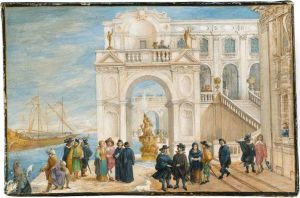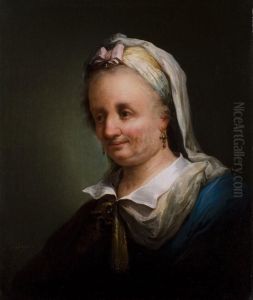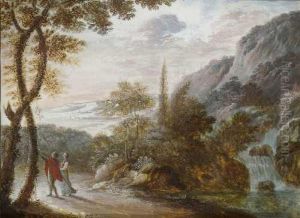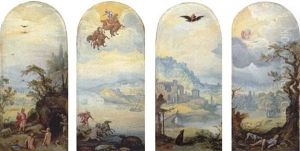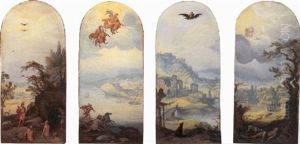Bartholomeus Dietterlin Paintings
Bartholomeus Dietterlin, also known as Bartholomäus Deiters, was a German artist and printmaker born in 1550 in Pfullendorf, Holy Roman Empire. He is best known for his work as an architectural theorist and engraver. His artistic journey began in an era of significant transformation in Europe, when the Renaissance style was merging with the Northern Mannerist aesthetic.
Dietterlin's most famous work is his treatise on architecture titled 'Architectura', which was published in five parts between 1593 and 1594. This work is a collection of 200 etchings that illustrate and explore a variety of ornamental architecture, including portals, columns, and friezes. His style was characterized by an elaborate and fantastical approach to architectural elements, blending traditional classical forms with the emerging Baroque sensibility. The treatise was influential in spreading the Mannerist style across Germany and into Eastern Europe.
Despite the importance of his treatise, little is known about Dietterlin's life and training. Historical records that could provide details about his education and influences are scarce. It is believed that he worked in Strasbourg for most of his career, and his works suggest he was deeply influenced by the prevailing artistic trends of the period, including those from Italy and the Low Countries.
Dietterlin's death is recorded in 1599, and while he did not achieve widespread fame as an architect or builder, his legacy lies in his contribution to the dissemination of architectural ideas. His treatise 'Architectura' continued to be republished and referenced by architects and artists well into the 17th century, ensuring that his imaginative ornamental designs would have a lasting impact on the development of European architecture. Today, Dietterlin is recognized not only for his architectural engravings but also for his role in the history of art as a transmitter of Mannerist ideas.
